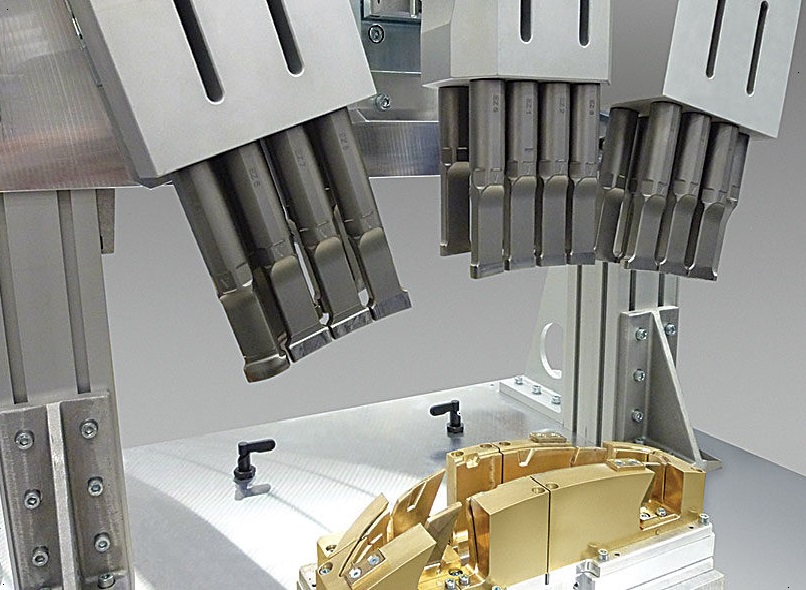Unraveling the Intricacies of Ultrasonic Welding Large Plastic Parts: A Comprehensive Guide

Ultrasonic welding is a highly versatile and widely adopted technique used in the manufacturing industry for joining large plastic parts together. This process offers numerous advantages over traditional welding methods, including efficiency, speed, and the ability to create strong and reliable bonds. In this comprehensive guide, we will delve into the intricacies of ultrasonic welding and explore its application in joining large plastic parts.
ultrasonic welding, large plastic parts
The process of ultrasonic welding involves utilizing high-frequency vibrations to generate heat at the joint interface between two plastic parts. This heat softens the plastic material, allowing it to fuse together seamlessly. The entire process can be broken down into several key steps:
1. Preparation
Before the welding process begins, it is crucial to properly prepare the plastic parts. This involves cleaning the surfaces to be joined, ensuring that they are free from any contaminants or debris. Proper surface preparation ensures optimal bonding and enhances the overall quality of the weld. Additionally, it may involve the selection of appropriate welding parameters, such as amplitude, duration, and pressure, based on the specific materials being used.
2. Fixturing
Once the plastic parts are prepared, they are securely held in place using a fixture or clamping device. This fixture ensures that the parts remain aligned and stationary during the welding process. The precision of fixturing is essential for achieving accurate and consistent welds. Fixturing may vary depending on the size, shape, and complexity of the plastic parts being joined.
3. Horn Placement
The next step involves positioning the ultrasonic horn against the joint area of the plastic parts. The horn, typically made of metal, applies pressure to the parts, creating a tight contact between them. This pressure ensures that the vibrations generated by the horn are effectively transmitted to the joint interface. The selection of an appropriate horn design is crucial for achieving optimal energy transfer and weld quality.
4. Vibration and Heat Generation
Once the horn is in place, it begins to vibrate at a specific frequency, typically ranging from 15 to 40 kHz. This vibration generates friction and heat at the joint interface, causing the plastic to soften. The amount of heat generated is carefully controlled to prevent overheating or damage to the plastic parts. The selection of the appropriate vibration frequency and amplitude is vital for achieving consistent and reliable welds. Advanced ultrasonic welding systems may incorporate real-time monitoring and feedback mechanisms to ensure precise control over the welding process.
5. Weld Formation
As the plastic material softens due to the generated heat, it starts to flow and merge together, forming a strong bond. The duration of the welding process depends on various factors, including the material type, part thickness, and desired weld strength. The operator must monitor the process closely to ensure the weld is formed correctly and meets the required specifications. Advanced ultrasonic welding systems may incorporate real-time monitoring and feedback mechanisms to ensure precise control over the welding process.
6. Cooling and Solidification
After the desired weld is formed, the ultrasonic vibrations cease, and the plastic parts are allowed to cool and solidify. This cooling process is crucial as it ensures that the bond becomes stable and strong. Proper cooling prevents any potential deformation or weakening of the weld. The cooling time may vary depending on the specific plastic materials used and the size and complexity of the welded parts.
Ultrasonic welding is particularly well-suited for joining large plastic parts due to its ability to efficiently handle the size and complexity of such components. It is widely employed in various industries, including automotive, electronics, medical devices, packaging, and consumer goods. Some notable applications include the welding of interior trim parts, fluid reservoirs, air ducts, bumpers, connectors, sensors, housings, and more.
The selection of the appropriate ultrasonic welding parameters and equipment is crucial for achieving high-quality welds in large plastic parts. Factors such as amplitude, frequency, pressure, and welding time need to be carefully considered to ensure optimal bonding and desired weld strength. Additionally, the choice of welding horn material plays a significant role in the welding process. Factors such as acoustic properties, mechanical strength, wear resistance, fatigue resistance, thermal conductivity, and chemical compatibility should be taken into account when selecting the welding horn material.
In conclusion, ultrasonic welding is a versatile and efficient method for joining large plastic parts. The process involves thorough preparation of the parts, precise fixturing, careful horn placement, controlled vibration and heat generation, formation of the weld, and subsequent cooling and solidification. By understanding and implementing the intricacies of ultrasonic welding, manufacturers can achieve strong, reliable, and aesthetically pleasing bonds in large plastic parts, contributing to the overall quality and functionality of the end products. The continuous advancement of ultrasonic welding equipment and technology contributes to improved process control, energy efficiency, and weld quality. Innovations such as multi-frequency ultrasonic systems, intelligent power sources, and advanced horn designs offer new possibilities for optimizing the welding process and expanding its applications.
In conclusion, the selection of the right material for ultrasonic welding horn is crucial for achieving successful and efficient welding operations. By considering properties such as acoustic characteristics, mechanical strength, wear resistance, fatigue resistance, thermal conductivity, and chemical compatibility, manufacturers can choose the welding horn material that best suits their specific application requirements. The proper selection of welding horn material enhances the performance and longevity of the welding process, contributing to improved productivity, cost-effectiveness, and the production of high-quality welds. As technology continues to advance, the field of ultrasonic welding horn material will continue to evolve, leading to further advancements, innovation, and progress in the manufacturing landscape.
See more ultrasonic welding troubleshooting





